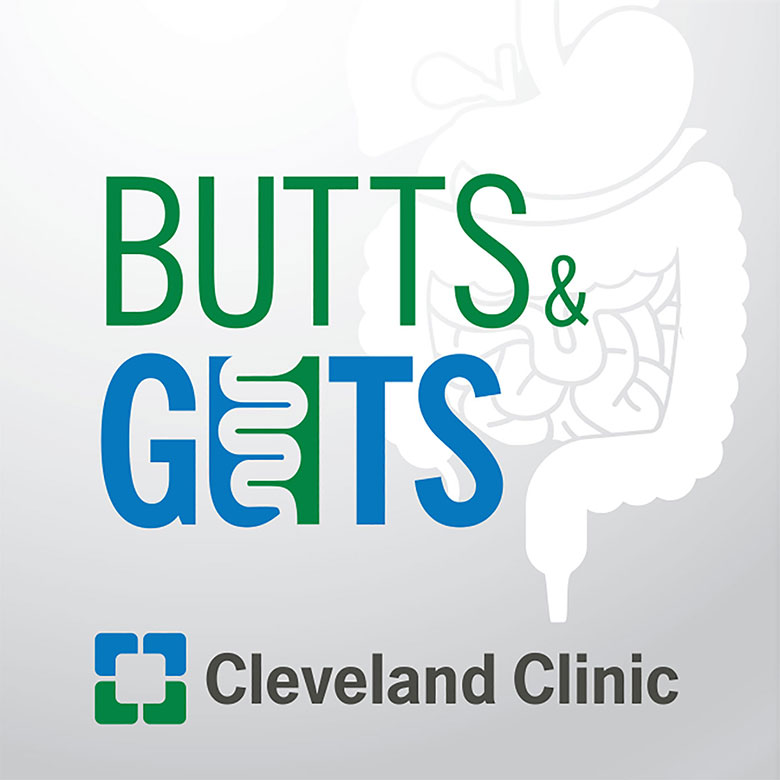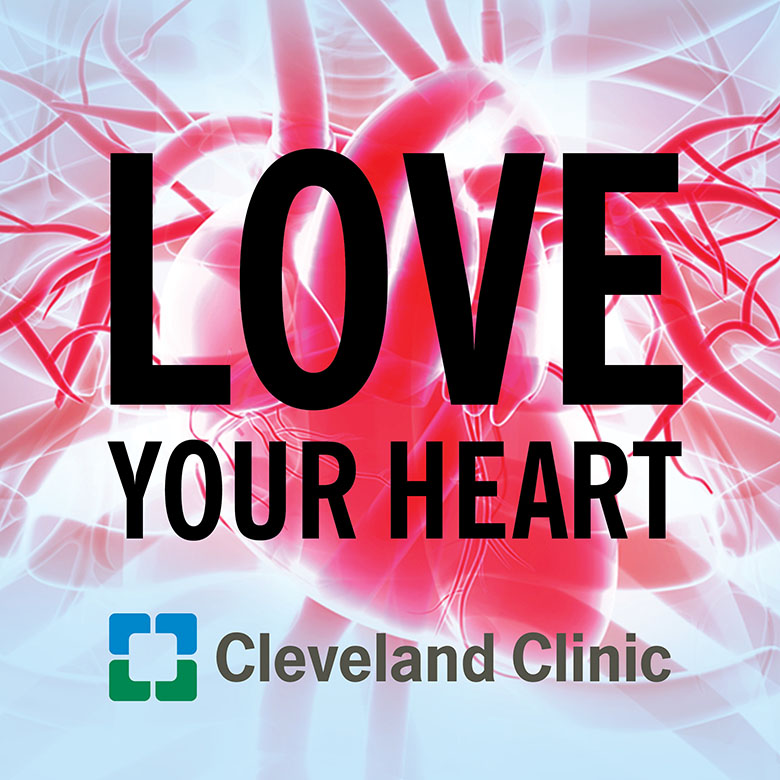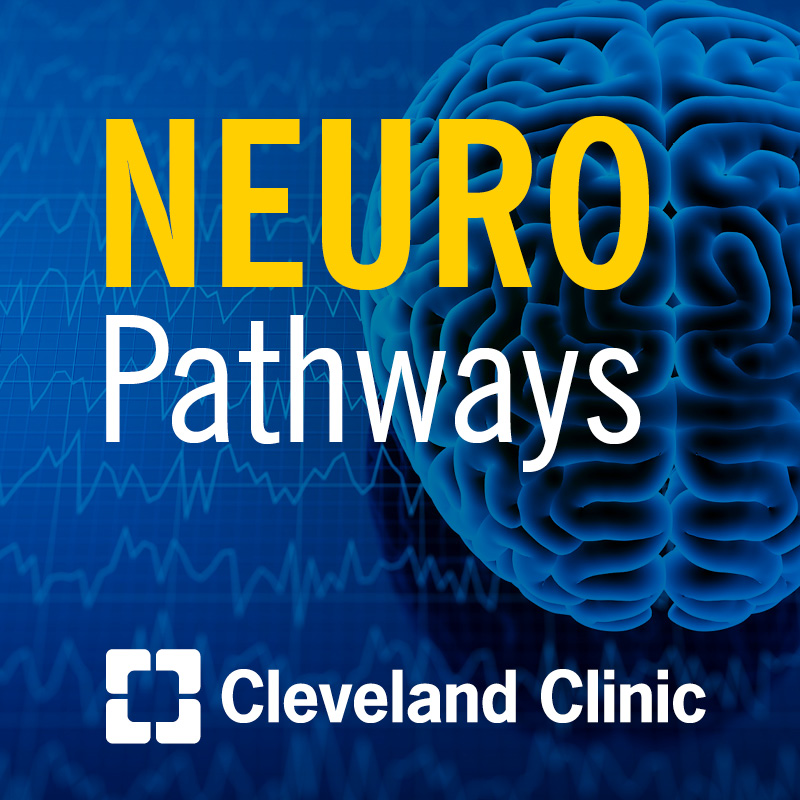LVAD as a Destination Therapy
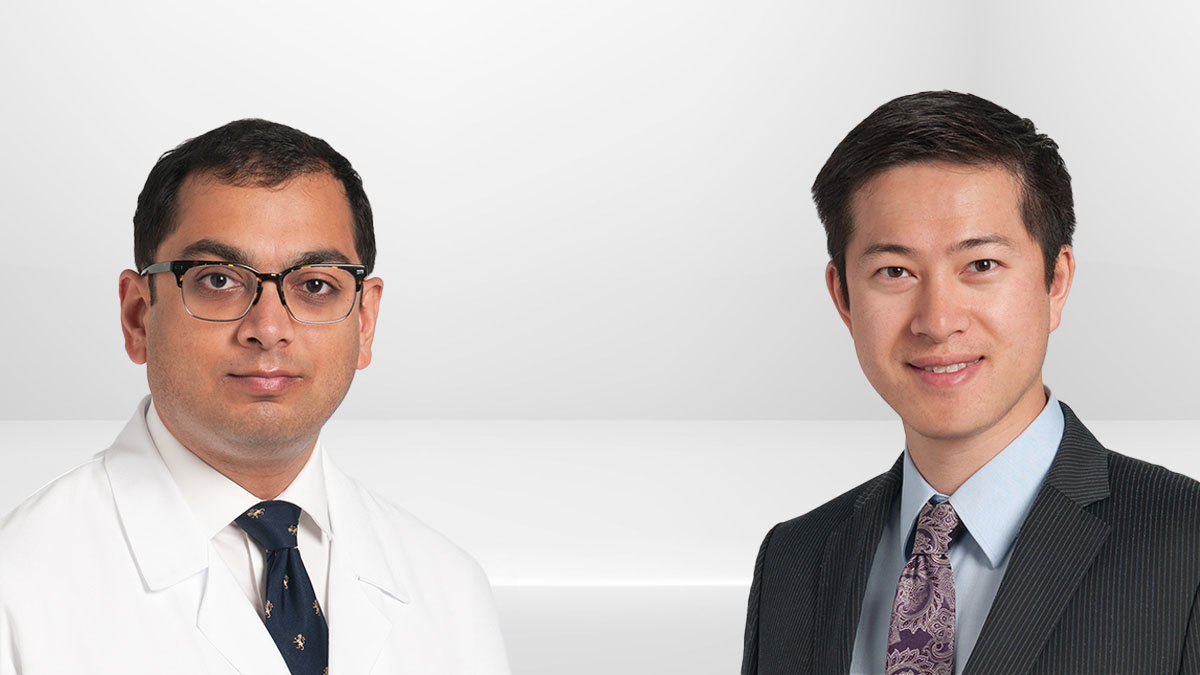
For patients with heart failure, a left ventricular assist devices (LVAD) can help the body meet its circulatory needs. Pavan Bhat, MD, and Michael Tong, MD, discuss LVAD as a bridge between medical therapy and a heart transplant, or as a destination therapy for those who aren't transplant candidates.
Learn more about the Kaufman Center for Heart Failure Treatment and Recovery.
Looking to refer a patient? Please reach out to our Physician Referral team Mon. - Fri., 8 a.m. - 5 p.m. (ET) at 855.751.2469.
Subscribe: Apple Podcasts | Podcast Addict | Buzzsprout | Spotify
LVAD as a Destination Therapy
Podcast Transcript
Announcer:
Welcome to Cleveland Clinic Cardiac Consult, brought to you by the Sydell and Arnold Miller Family Heart, Vascular and Thoracic Institute at Cleveland Clinic. This podcast will explore the latest innovations, medical and surgical treatments, diagnostic testing, research, technology and practice improvements.
Pavan Bhat, MD:
I'm Dr. Bhat. I'm one of our advanced heart failure physicians and also the Associate Director of our LVAD Program.
Michael Tong, MD:
I am Michael Tong, and I am the Surgical Director of Heart Transplant and LVADs. I've been here at Cleveland Clinic for 13 years. I do all kinds of open-heart surgeries. I perform about 400 open-heart surgeries a year. But my true love and passion is heart failure. This is the reason I came to Cleveland in the first place back in 2012, and this is the reason why I continue to stay here.
Pavan Bhat, MD:
LVAD therapy, first of all, stands for left ventricular assist device. So, what this is, is a fully mechanical heart assist device that's actually implanted in your chest. It's a surgical procedure, Dr. Tong here is an expert on. So, it involves a full sternotomy and is actually implanted on your heart itself and it helps assist your heart in function. The overall goal of this therapy is to get you back to normal life.
Patients with advanced heart failure have severe symptoms, and we see them every single day. They're short of breath, unable to do everyday activities. Our goal is to get you back to living your normal life so you're able to golf, go to your daughter's wedding. We've all heard these stories actually with our own patients. That’s our goal with a lot of our patients, to be honest, getting you back to your normal life.
Now, what an actual LVAD device looks like is the only external part will be the battery. So, you'll see a small driveline and a battery, and a lot of patients even hook up into a vest that they wear on their person. The actual pump itself is all internal inside the chest. It's done during the surgical procedure.
Now, when we talk about destination therapy, what that specifically means is our patients we evaluate, could they also be a heart transplant candidate? LVAD therapy can be used both as a bridge to transplant or, if patients are ineligible for transplant, to prolong life for patients who have no other options. So, destination therapy is really for patients who are not transplant candidates, getting them still a long, prolonged life, even if they don't have transplant options.
Michael Tong, MD:
The history of innovation in heart failure here is unmatched. If we think back into the 1940s around World War II, there was Dr. Willem Kolff coming from the Netherlands to the Cleveland Clinic. He's been widely recognized as the father of artificial organs. When he came to Cleveland, he started the Center of Artificial Organs and was credited in building the first artificial dialysis machine.
His love was not only for nephrology, but also for cardiology. He also built the first total artificial heart that was used to treat a dog, and kept the dog alive with the total artificial heart for 90 minutes after surgery. This was back in the 1950s. He had since gone on to innovate with the precursor of the Jarvik total artificial heart. Much of that research was done here at the Cleveland Clinic.
If we fast-forward many decades, Cleveland Clinic has always been in the forefront of medical innovation and in the forefront of medical device innovation, particularly with the left ventricular assist device. We've been the pioneering facility of many of the early devices, as well as in the more recent years. We've been the largest implanting center of mechanical circuitry support, including LVADs, including short-term mechanical support devices. Currently, we perform on average approximately 80 LVADs a year.
Dr. Bhat, to take care of these patients and the volume that we have truly does require an entire multidisciplinary team to take care of these patients.
Pavan Bhat, MD:
We have a clear multidisciplinary team, as these patients are complex. They have a lot of different factors. Every referral always starts first with our nurses. They are reviewing the case and determining any testing that a patient needs, even before arrival to Cleveland Clinic. So, we have all that scheduled even before arrival.
Every single advanced heart failure consultation will involve a meeting with a heart failure doctor, our surgeons, our social worker and nutrition to evaluate the patient's nutritional status. If they have a multi-organ dysfunction, it might involve a hepatologist or a pulmonologist or other organs that we deem might need evaluation. We bring all these patients to be evaluated at our Advanced Heart Failure Committee, where we discuss them as a group and discuss the overall risk strategies, any bridging strategy we may have to use in order to get the patients safely through surgery or otherwise.
They also meet with our LVAD nurse practitioner group. So, these are the same group that takes care of them in the hospital and outside the hospital. So, there's continuity of the care and they understand our entire LVAD group and who's going to be taking care of them. While they're in the surgical ICU, of course our surgical team and our intensivists are taking care of them. Then once they arrive on the step-down unit after a successful surgery, our LVAD nurse practitioner group will take over. They also continue taking care of these patients even as an outpatient.
Michael Tong, MD:
One of the main aspects that's really unique about our program is just throughout the day how many times we actually see each other. That is not by accident. Even the design of this building, our offices are just one floor above your office. Every time I walk to the CCU (coronary care unit), I walk past the heart failure clinic.
We also build in time where we spend time together. Every day at 2:00, we meet together to discuss every single heart failure patient in the hospital, whether they are post-surgical, whether they are new referrals, whether they are a shock patient, whether they are somebody who is in need of advanced heart care in the CCU. The fact that we can meet each other many times a day and see each other many times a day means we can make decisions very, very quickly. It's that nimbleness that allows us to achieve the best results, because sometimes for these patients, time really is of the essence.
Pavan Bhat, MD:
We definitely take on complex patients. Some of our patients have been turned down by other institutions. It requires that constant vigilance and that every day we’re touching base in order to make sure these patients get through surgery safely and get home safely.
Michael Tong, MD:
Yeah. Often you guys come into the operating room to see what we're doing.
Pavan Bhat, MD:
Yeah, absolutely.
Michael Tong, MD:
And to have, really, a visual of what you're seeing in the clinics in the CCU. I think that's critically important, the fact that we work so closely together, many times in every given day in addition to our usual surgical selection or transplant selection meetings.
So, now, let's start talking a little bit about our protocols that we've developed. The fact that we have been able to build one of the largest heart failure programs in the world means that we have been able to innovate on essentially the process of how do we get these patients in quickly, and how we get these patients through surgery, and how do we get them back to their normal lives.
Pavan Bhat, MD:
As part of every single evaluation, we're always evaluating the hemodynamics prior to the operation. That includes a right heart catheterization or also an echocardiogram. If we're identifying patients that are at risk for RV (right ventricular) dysfunction, we're often admitting them to the hospital. We might have a leave-in Swan-Ganz catheter. We have certain parameters, monitoring PAPI (pulmonary artery pulsatility index) and also RV function, in order to optimize these patients the best we can prior to surgery.
At the time of surgery, we're also pausing and doing an RV huddle. An RV huddle involves actually looking at the RV hemodynamics and also RV size on TEE (transesophageal echocardiogram) and making decisions there, whether we proceed with surgery or do we also need some additional RV mechanical support. All these are multidisciplinary discussions between the surgeons, the heart failure doctors, and everyone else. We have this algorithmically to make sure that we make that pause to get these patients safely through the operation.
In the post-operative course, also we have a good protocol in terms of initiation and coagulation, also getting them rapidly out of the ICU. Sometimes mobilization, getting people as soon as possible to the floor so they can do physical therapy. That is the best thing in terms of recovery and getting these patients home safely. Then also, in terms of long-term support, in terms of driveline care and all that, we have regularized protocols as well to try to reduce driveline infection and things like that.
Michael Tong, MD:
All those things that you mentioned are absolutely critical in terms of getting the long-term success.
A lot of efforts, of course, in heart failure over the last decade have been on guideline-directed medical treatment (GDMT) and making sure that the patients are on the best medicines that they possibly can be so that their hearts can go on for as long as possible. Now, in the past, this was something that wasn't always done in post-LVAD patients, but we've recognized very early that this is something that is extremely important. We're pretty proud of getting these patients back on GDMT.
Pavan Bhat, MD:
In terms of re-initiating GDMT after, we're rather aggressive. Our overall goal is at that follow up visit in 30 days, we have the patients on all four major pillars of GDMT, either an ARNI or ARB, a beta blocker, an SGLT2 inhibitor, or also an additional NMRA. We find that putting patients on all four, first of all, helps reduce our stroke risk, helps bring down blood pressures, improves the hemodynamics with the pump, and also helps with LV remodeling. Occasionally, we do have LV recovery. That is something that we definitely try to achieve.
Michael Tong, MD:
Also, in the past year or so, we've been pretty fortunate that we're in the forefront of innovation in some of the biggest clinical trials in LVAD. Why don't you tell us about the exciting trial that you're a part of?
Pavan Bhat, MD:
Yeah, absolutely. Let me just tell you a little bit more about INNOVATE. The LVAD device we predominantly use here at Cleveland Clinic is the HeartMate 3. We're also trying a new LVAD device. It's called BrioVAD. It's similar to HeartMate 3 in a lot of ways, but one of the key advantages is smaller peripherals, a smaller battery, a smaller driveline. We're trialing it here as the first in the US, in addition to other centers across the United States, to see if we can bring this therapy to patients. So, if your patients are interested in novel LVAD therapies, this is an option if you come here to Cleveland Clinic.
Michael Tong, MD:
Yeah. we're one of only eight sites in the United States that are participating in the early study.
Pavan Bhat, MD:
Of course. I think that's speaking to our good surgical experience and our good outcomes. We've been innovators in a lot of early LVAD therapies, be it HeartMate 3 or the other HeartMate devices. So, this is not the first time we've innovated in terms of LVAD therapies.
Mike, why don't you talk a little bit about the research opportunities you've had?
Michael Tong, MD:
The other major device trial in this field is the TEAM-HF trial. Now, historically, LVADs have only been used in patients who are on inotropes. If you look across the country, about 85% of the patients who receive LVADs are already on inotropes, and 15% are not quite on inotropes, what we call status four or higher. Now, at the Cleveland Clinic, we've always recognized early on that even if a patient is not on inotropes, there are a lot of these patients we know will have prognostically a poor outcome. We have advocated using LVADs for these patients often before they start inotropes. About a third of our patients are, in fact, INTERMACS four. So, we'll put LVADs in them before they get to the point where they need inotropes.
Now, one of the trials that I am one of the co-national PIs is called the TEAM-HF. What that trial is, is there's two phases. The first phase is identifying patients who we feel could be potential LVAD patients, but they're not quite there yet. They're not on inotropes, and we're still not quite sure if they meet criteria. We’ll first start with a CardioMEMS device. A CardioMEMS device is a very small device that is implanted into the pulmonary artery, and the pressures in the pulmonary artery will be continuously monitored.
The patients that have pulmonary hypertension with PA (pulmonary arterial) means of over 30, despite optimal medical treatment for 90 days, will then be randomized to either continue medical treatment or LVAD. That is chosen because we know that patients that have residual pulmonary hypertension, despite optimal medical treatment, will have a far worse survival than your normal heart failure patients who are good responders to medical treatment. In the community, we have equipoise. However, this is still not something that's generally accepted, that this is a group of patients that will do better with LVADs. We know that the one-year survival for these patients that have residual pulmonary hypertension is probably around 60-70%. But we know that for these patients, if they have LVAD, their survival is north of 85%.
So, there's clear benefit. This is something that we want to show on a national level. We're very excited to be the leaders in this trial. This is still very early on in this trial, but one that I feel will have far reaching implications for device therapies and ongoing heart failure management for patients.
Pavan Bhat, MD:
I find it a very exciting trial simply because, you know, we have a large umbrella of advanced heart failure. I think it's very easy for a lot of cardiologists to recognize advanced heart failure when people are inotrope dependent or dependent on mechanical circulatory support, but the walking wounded, the INTERMACS four, maybe an under-recognized population that could benefit from advanced heart failure [treatment], but sometimes isn't referred to in time.
Like you mentioned, these are the groups that have the best benefits and even the best outcomes after LVAD. So naturally intervening early, as opposed to waiting until people are sick in the ICUs, is the best approach.
Michael Tong, MD:
We all have seen those patients. When patients come in, they are in multi-organ failure. They are crashing and burning. We do our best to try to rescue them. Often, we are successful and sometimes we're not. The times we’re not, we always think to ourselves, “If only this patient could have come six months earlier.” This is what I think this trial will show, how we identify these patients six months earlier, before they get to that point where they're unsalvageable.
Pavan Bhat, MD:
I think early referrals and, and earlier notification of heart failure, is the key to success in this situation, like you mentioned.
Michael Tong, MD:
When I talk to cardiologists from other centers and our referring physicians, often the one question that they ask me is, for our patients, sometimes it's not easy for them to come to Cleveland. They may not necessarily live in Cleveland. However, what do you feel is the benefit for patients that come to the Cleveland Clinic?
Pavan Bhat, MD:
Here's the thing. Especially when you're doing something as big and complex as advanced heart failure, you want to work with the best. To be honest, these are big operations that we have excellent outcomes with. Especially when you're talking about referral from a lower volume center or evaluation at lower volume center, we could advocate that our LVAD mortality and survivability, and also quality of life after LVAD, here at our institution is superior. That's the biggest thing. I advocate for patients being referred to a large volume center or a center that has high complexity.
Michael Tong, MD:
Truly, we have very few reasons to turn patients down. We have patients that are second, third, fourth, fifth time redos that we take on, without any significant increase in mortality. We have patients who often, like you said, have been turned down elsewhere, and they come here for a second opinion.
We're able to offer them treatments that were not possible for them previously. Part of that is our surgical culture. We have a never say no attitude, and we have a can-do attitude that we want to help every patient. This is part of our DNA and part of our ethos and something that we're very, very proud of.
So, let's wrap this up. Give us some of the take home messages for our audience. What we offer here at the Cleveland Clinic and why they should refer their patients here.
Pavan Bhat, MD:
I think when we talk about advanced heart failure in general, I think early identification of advanced heart failure and earlier referrals, that's the key to success when it comes to good LVAD or transplant outcomes. I think one of the key things Cleveland Clinic offers is this multidisciplinary approach, where we're looking at all aspects of patient care. Especially higher risk patients that are still high risk for surgery at other institutions, we're often able to get through surgery successfully by optimizing them preoperatively and also supporting them post-operatively with this multidisciplinary approach.
That’s what I always tell my patients and my referring physicians as well.
Michael Zhen-Yu Tong, MD:
We have protocols that we've developed together, where we try to get LVAD patients out of the ICU within 48 hours of surgery. Our length of stay is shorter than the median. Our length of stay on average is approximately about 14 to 16 days or so post LVAD.
Like you said, our outcomes are extremely good. Our two-year survival is north of 85%, and our five-year survival is north of 60%. Sometimes we forget just how good that is.
Just think back to the REMATCH trial, where the two-year survival for optimal medical treatment was only 8%. Now we have five-year survival greater than 60%. It’s an absolutely brand-new world. We're at the forefront of innovation. We can get patients into clinical trials that other centers may not necessarily have access to yet. Over time they may. But, we have access to the newer devices and to the high end, the surgical expertise that we offer here. So, I'm very proud.
Pavan Bhat, MD:
I’m extremely proud to be part of the team, too.
Michael Tong, MD:
Yeah. I'm very proud to work alongside you every day. We continue to strive forward in helping patients and giving them the best care that they deserve.
Announcer:
Thank you for listening to Cardiac Consult. We hope you enjoyed the podcast. For more information or to refer a patient to Cleveland Clinic, please call 855.751.2469. That's 855.751.2469. We welcome your comments and feedback. Please contact us at heart@ccf.org. Like what you heard? Subscribe wherever you get your podcasts or listen at clevelandclinic.org/cardiacconsultpodcast.
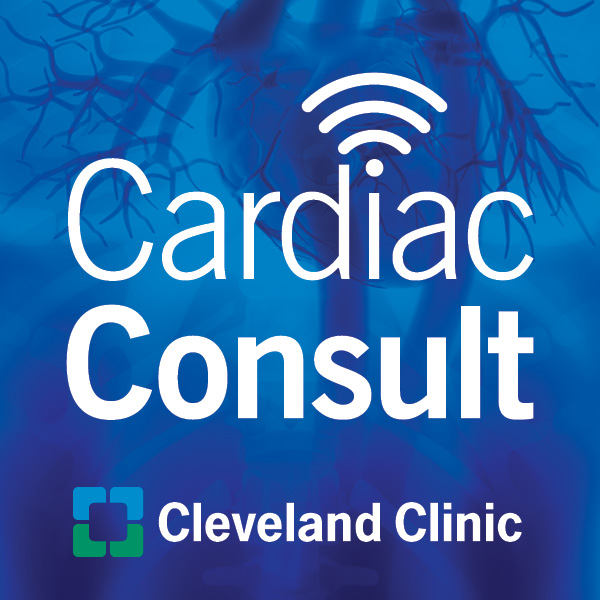
Cardiac Consult
A Cleveland Clinic podcast exploring heart, vascular and thoracic topics of interest to healthcare providers: medical and surgical treatments, diagnostic testing, medical conditions, and research, technology and practice issues.
